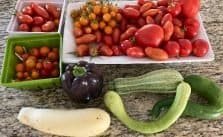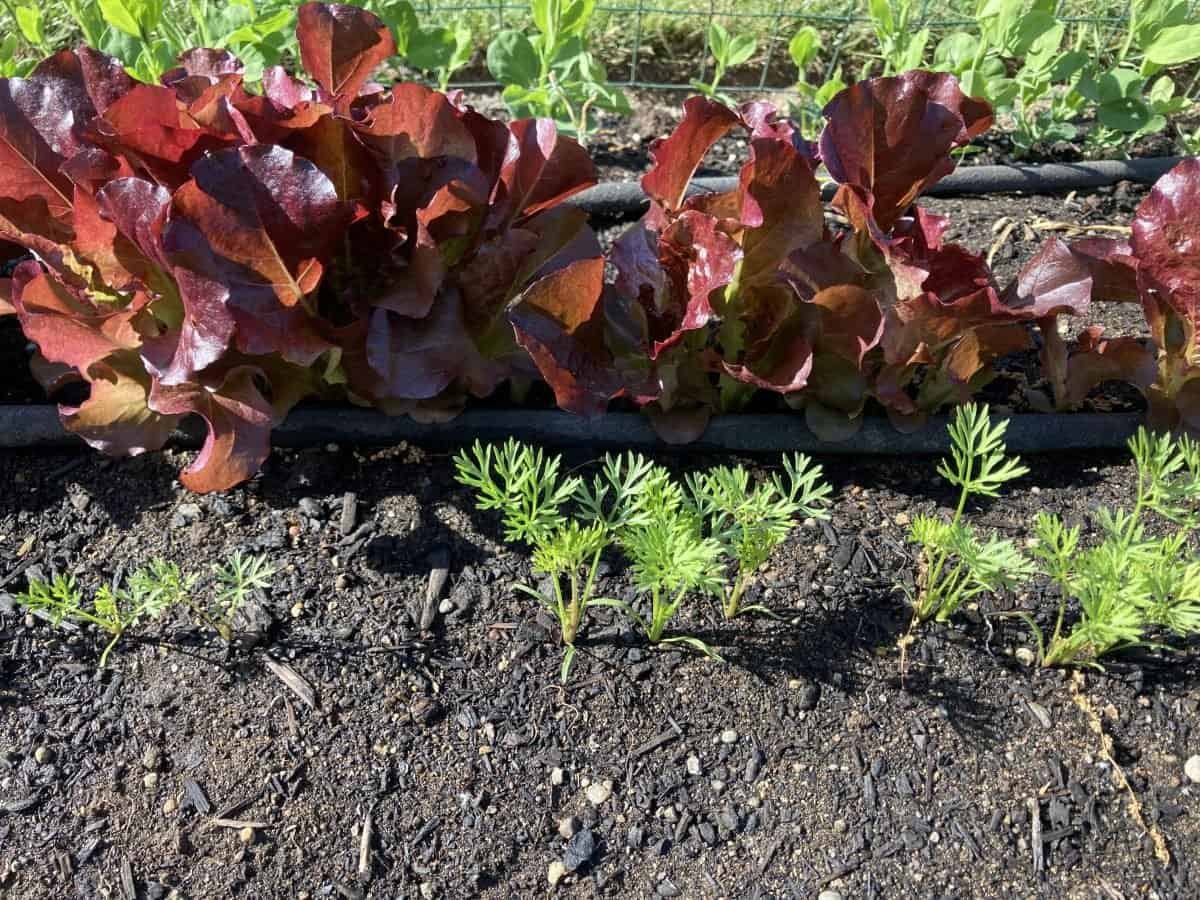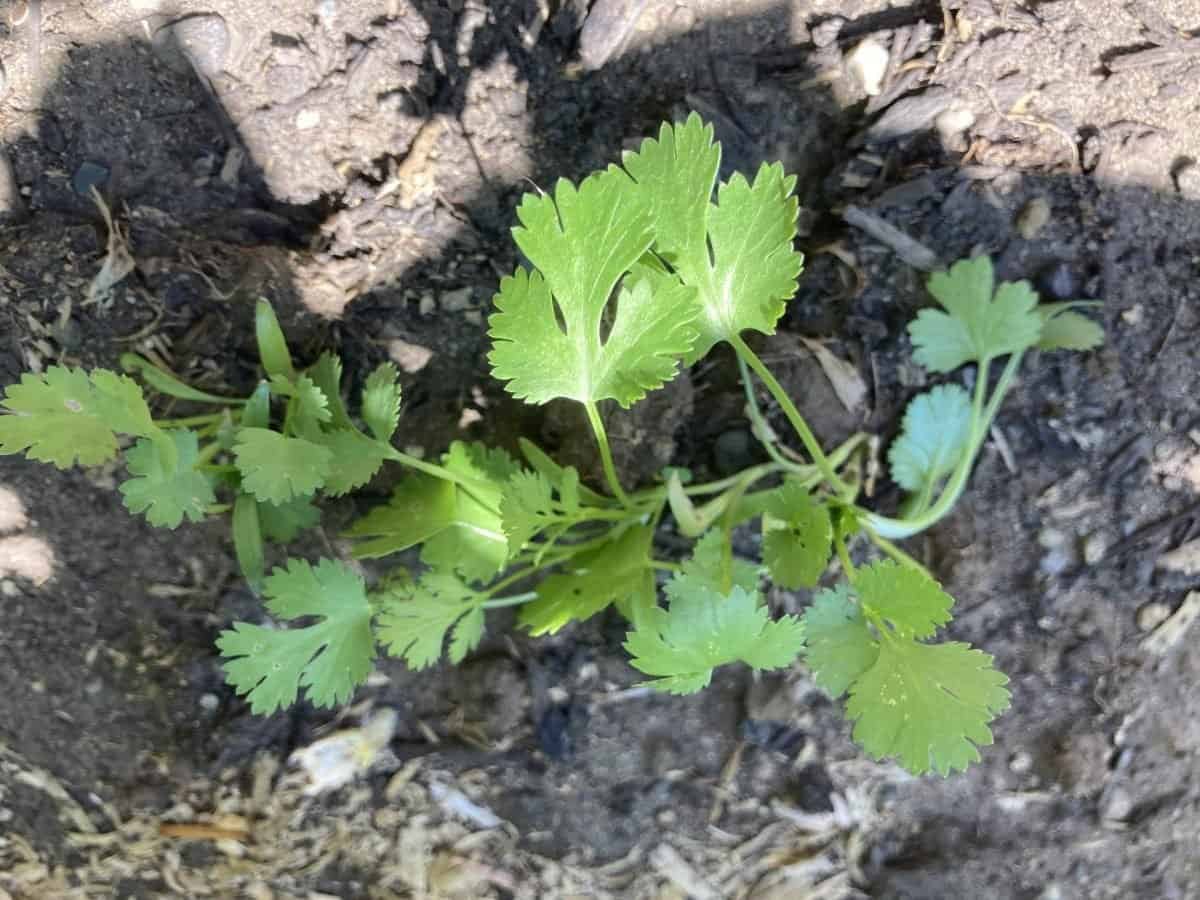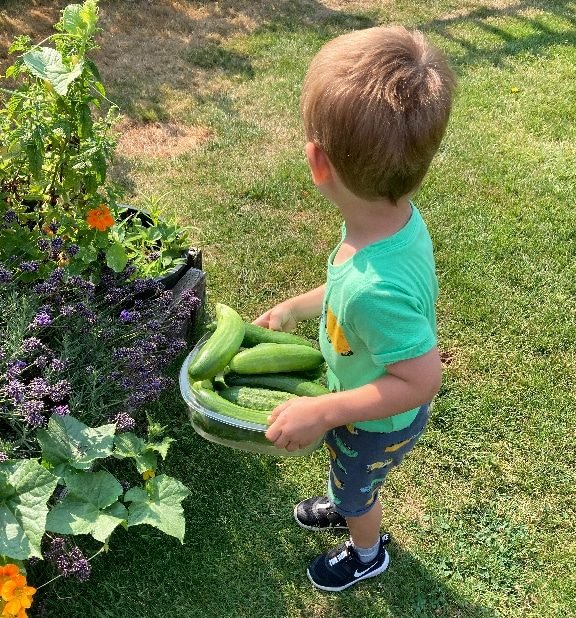You too can get a large harvest like this if you use the Square-Foot Gardening beginner’s guide I will outline for you.
If you’re interested in gardening but don’t have a lot of space, square-foot gardening might be the perfect solution for you. This method involves planting in small, raised beds that are divided into square-foot sections, making it easy to manage and maintain your garden. It’s a great way to grow your own vegetables, herbs, and flowers, even if you only have a small balcony or patio.
Square-foot gardening is a popular method because it’s easy to set up and maintain, and it allows you to grow a variety of plants in a small space. The key to success is proper planning and organization. By dividing your garden into square-foot sections, you can easily keep track of what you’ve planted and when, and you can easily rotate your crops to ensure healthy soil and plants.
In this article, we’ll walk you through the basics of square-foot gardening, including how to plan and set up your garden, what to plant, and how to care for your plants throughout the growing season. Whether you’re a seasoned gardener or a beginner, square-foot gardening is a fun and rewarding way to grow your own food and beautify your outdoor space.

Let’s get started with your Beginner’s Guide to Square-Foot Gardening
What is Square-Foot Gardening?
Square-foot gardening is a popular method of growing plants in a small space. It involves dividing a garden bed into small square-foot sections, each of which is planted with a different type of plant. This method is particularly useful for people who have limited space, as it allows them to grow a variety of plants in a small area.
The square-foot gardening method was developed by Mel Bartholomew in the 1980s. He believed that traditional row gardening was wasteful and inefficient, as it required a lot of space and often resulted in overgrown, tangled plants. By dividing the garden bed into small sections, he was able to maximize the use of space and create a more organized, manageable garden.
One of the key benefits of square-foot gardening is that it allows you to grow a variety of plants in a small space. By planting different types of plants in each square-foot section, you can create a diverse, thriving garden. Additionally, because the garden bed is divided into small sections, it is easy to manage and maintain.
If you are interested in trying square-foot gardening, there are a few key things to keep in mind. First, you will need to choose the right location for your garden bed. Ideally, it should be in a sunny area that is protected from strong winds. You will also need to prepare the soil by adding compost or other organic matter to improve its fertility.
Once your garden bed is prepared, you can begin dividing it into square-foot sections and planting your seeds or seedlings. By following the square-foot gardening method, you can create a beautiful, productive garden that will provide you with fresh produce all season long.
Benefits of Square-Foot Gardening
Square-foot gardening is a popular gardening technique that has numerous benefits. Here are some of the main advantages of square-foot gardening:
- Efficient use of space: Square-foot gardening allows you to grow more plants in a smaller space than traditional row gardening. By dividing the garden into square-foot sections, you can plant a variety of vegetables and herbs in a compact area.
- Less work: Square-foot gardening requires less work than traditional gardening methods. The small size of the garden makes it easy to maintain and weed, and you can easily reach all the plants without stepping on the soil.
- Reduced water usage: Because square-foot gardening uses less space, it also uses less water. The close spacing of plants helps to conserve moisture, and you can easily water the plants by hand or with a drip irrigation system.
- Higher yields: Square-foot gardening can produce higher yields than traditional gardening methods. By planting in a grid pattern, you can maximize the use of space and increase the number of plants in the garden.
- Less waste: Square-foot gardening can reduce waste by allowing you to plant only what you need. By planting in small sections, you can avoid overplanting and wasting seeds and plants.
Overall, square-foot gardening is a great way to grow your own vegetables and herbs in a small space. With its efficient use of space, reduced work, and higher yields, square-foot gardening is an excellent choice for both beginners and experienced gardeners.
Square-Foot Gardening Beginners Planning Guide
Before you start planting, it’s important to plan out your square-foot garden. This will help you make the most of the space you have available and ensure that your plants have everything they need to thrive. Here are a few things to consider when planning your garden:
- Location: Choose a spot that gets plenty of sunlight and is easily accessible for watering and harvesting.
- Size: Determine how many square feet you want your garden to be. This will depend on how much space you have available and how many plants you want to grow.
- Layout: Decide on the layout of your garden. You can use a simple grid pattern or get creative with different shapes and designs.
- Soil: Make sure your soil is healthy and nutrient-rich. You may need to add compost or other amendments to improve the soil quality.
- Plants: Choose the plants you want to grow based on your location, climate, and personal preferences. Consider factors like the amount of sunlight and water each plant needs, as well as how much space they require.
By taking the time to plan out your square-foot garden, you can set yourself up for success and enjoy a bountiful harvest. Keep these tips in mind as you move on to the next step of preparing your garden beds.
Preparing Your Garden Bed
Before you start square-foot gardening, it’s important to prepare your garden bed properly. Here are the steps to follow:
- Choose the right location: Look for a spot that gets at least six hours of sunlight per day and has good drainage. Avoid areas that are shaded or prone to flooding.
- Clear the area: Remove any grass, weeds, or other vegetation from the site. You can use a shovel, hoe, or weed-removal tool to do this.
- Loosen the soil: Use a garden fork or tiller to break up the soil and remove any rocks or debris. This will help the soil retain moisture and allow roots to grow more easily.
- Amend the soil: Depending on your soil type, you may need to add organic matter such as compost, peat moss, or vermiculite to improve drainage and fertility. A soil test can help you determine what amendments are needed.
- Mark off your squares: Use stakes and string to mark off your garden bed into 1-foot squares. This will help you visualize where to plant each crop.
By following these steps, you’ll be on your way to creating a healthy and productive square-foot garden.
Planting Your Square-Foot Garden
Now that you have your square-foot garden built and filled with soil, it’s time to start planting! Here are some steps to follow:
- Plan your garden layout: Decide which plants you want to grow and where to plant them. Use the square-foot gardening method to determine how many plants can fit in each square foot. For example, one square foot can fit 1 tomato plant, 4 lettuce plants, or 16 radish plants.
- Start planting: Dig a small hole in the soil for each plant, making sure to follow the spacing guidelines for each plant type. Gently remove the plant from its container and loosen the roots before placing it in the hole. Cover the roots with soil and gently pat down the soil around the plant.
- Water your plants: After planting, water your plants thoroughly to help them settle into their new home. Keep the soil moist but not waterlogged, as too much water can lead to root rot.
- Add support structures: For plants that need support, such as tomatoes or cucumbers, add stakes or trellises to help them grow upright. This will also help prevent the plants from taking up too much space in your garden.
- Mulch your garden: Adding a layer of mulch to your garden can help retain moisture and suppress weed growth. Use organic mulch, such as straw or shredded leaves, and apply a layer about 2-3 inches thick.
By following these steps, you can have a successful square-foot garden that produces healthy and bountiful crops. Happy gardening!
Maintaining Your Square-Foot Garden
After the initial setup of your square-foot garden, it’s important to maintain it properly to ensure a healthy and abundant harvest. Here are some tips to keep your garden thriving:
- Watering: Water your garden regularly, ideally in the morning or evening when the sun is not too strong. Use a watering can or hose with a gentle spray to avoid damaging the plants. Make sure the soil is moist, but not waterlogged.
- Weeding: Keep an eye out for weeds and remove them as soon as you spot them. Weeds can compete with your plants for nutrients and water, so it’s important to keep them under control.
- Fertilizing: Square-foot gardens are designed to be nutrient-rich, but you may still need to add fertilizer from time to time. Use a balanced fertilizer and follow the instructions carefully to avoid over-fertilizing, which can damage your plants.
In addition to these basic maintenance tasks, you should also keep an eye out for pests and diseases. Here are some common problems to watch out for:
| Pest/Disease | Symptoms | Treatment |
|---|---|---|
| Aphids | Small, green insects on leaves and stems | Spray with insecticidal soap or neem oil |
| Slugs and snails | Irregular holes in leaves and slime trails | Handpick or use slug bait |
| Powdery mildew | white, powdery coating on leaves | Spray with a fungicide or remove affected leaves |
By following these tips and keeping a close eye on your square-foot garden, you can enjoy a bountiful harvest of fresh, healthy produce throughout the growing season.
Harvesting Your Square-Foot Garden
After all your hard work, it’s time to harvest the fruits of your labor. Here are some tips to help you maximize your harvest:
- Harvest regularly: Pick your vegetables and herbs as soon as they are ripe. This will encourage more growth and ensure that your plants don’t become overripe and inedible.
- Check frequently: Check your plants frequently for signs of ripeness. Different plants will have different indicators such as color, size, or texture. Research the specific plants you are growing to know when they are ready to be harvested.
- Use sharp tools: Use sharp pruning shears or scissors to harvest your plants. This will prevent damaging the plant and ensure a clean cut.
- Don’t overcrowd: Avoid overcrowding your plants, as this can lead to smaller yields and lower-quality produce. Follow the recommended spacing guidelines for each plant to achieve the best results.
Once you have harvested your produce, it’s important to store it properly to maintain its freshness:
| Vegetable | Storage Method |
|---|---|
| Tomatoes | Store at room temperature until ripe, then refrigerate |
| Lettuce | Wrap in damp paper towels and store in a plastic bag in the refrigerator |
| Cucumbers | Store in the refrigerator in a plastic bag |
| Carrots | Remove tops and store in a plastic bag in the refrigerator |
By following these tips, you can ensure a successful and bountiful harvest from your square-foot garden.
Common Mistakes to Avoid
While square-foot gardening is a simple and efficient way to grow fresh vegetables, there are a few common mistakes that beginners often make. Here are some things to avoid:
- Overcrowding: It can be tempting to plant as many seeds as possible in each square foot, but this can lead to overcrowding and stunted growth. Be sure to follow the recommended spacing for each type of plant.
- Watering too much or too little: Proper watering is key to a successful square-foot garden. Be sure to water deeply and regularly, but avoid overwatering, which can lead to root rot.
- Planting the wrong plants together: Some plants are natural companions and thrive when planted together, while others can inhibit each other’s growth. Do your research and plan your garden accordingly.
- Not rotating crops: Planting the same crops in the same square foot year after year can deplete the soil of nutrients and lead to disease. Be sure to rotate your crops each year.
- Ignoring pests and diseases: Even the best-planned garden can fall victim to pests and diseases. Be sure to monitor your garden regularly and take action at the first sign of trouble.
By avoiding these common mistakes, you can ensure a bountiful harvest from your square-foot garden.
I hope this beginner’s guide to Square Foot Gardening is helpful for you to get started.




